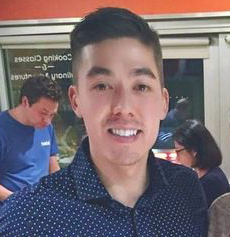Congrats! You have a nice chunk of cash that you want to invest.
Yeah, you could throw it into a savings account for safekeeping, but with interest rates usually earning you less than 2% annually, you’re barely keeping up with inflation.
Luckily, if you’re reading this article, you likely already understand the concept of having money “work for you” and you want to accelerate the process of reaching your financial goals.
The fact that you’re thinking about real estate being a potential strategy already puts you a few steps ahead.
Now, it’s time to learn more about systems that allow your money to grow on its own. I’m excited for you!
So let’s talk about $30k.
What can you realistically do with that in real estate? What are your options? Can that cash set you up for a stronger financial future?
Let’s jump in!
Understanding Your Realistic Opportunities and Boundaries
I just posed this question, but the first thing to ask is, “What can you do with $30,000 in real estate?”
Well, you’re probably not buying a palace on a private island. You’re probably not buying a mansion on the beach.
But let’s be real, those options probably won’t manifest in a good return on investment anyway.
As far as real estate investing options go, the ones that stand out to me are
- Buy a rental property in an affordable market
- Buy or “House hack” an affordable primary residence, or use favorable loan terms (like an FHA loan that only requires 3.5% down) if it’s more expensive
- Invest passively in a REIT or syndication
- Partner with someone on a bigger deal
We’ll touch on these options in detail later, but the point I’m trying to initially make is this: the first step is to grasp the realistic opportunities and boundaries you have with $30k.
And before you get too giddy about investing your cash, my personal financial advice to you is: just because you have $30k, doesn’t mean you have to invest it all at once. There’s no need to drop it all on a down payment, leaving you without any cash reserves for unexpected expenses that may come up.
Having to replace an AC unit, fixing appliances, repairing a water leak, and patching a roof are all expenses that may surprise you out of nowhere. As a property owner, you’ll have to address them and ensure a safe and livable property.

Define Your Strategy
Now that you’ve grasped the high-level opportunities you can explore with $30k, let’s dive into the details of some of my favorite strategies.
1. Buy and hold
This is one of my favorite strategies and what got me into real estate in the first place. This is the concept of buying a property, renting it to a tenant, and hopefully collecting more rent than the expenses you incur each month.
Buy and hold investing creates consistent cash flow and if you’re able to grow your portfolio, you may eventually be able to cover all of your monthly living expenses. That to me is one of the greatest benefits of real estate over the stock market or retirement vehicles like an IRA.
In addition, rental property also provides amazing tax benefits such as mortgage interest deductions, depreciation, and various “write-offs.”
2. House hack
This is the strategy of buying a primary residence and renting out your extra rooms to tenants.
You can also do this with a multifamily property. For example, you buy a duplex while living in one unit and renting the other.
The advantage of house hacking is that you’ve secured an asset in an area that you want to live in, plus you have tenants helping pay some (if not all) of your monthly expenses (mortgage, taxes, insurance, interest). Reducing your living costs will help accelerate your savings rate, and in turn, provide more money for you to invest or save.
3. REITs
This is a passive form of investing in real estate. REITs (Real Estate Investment Trusts) are companies that own, operate, and/or finance income-producing properties.
You can compare them to mutual funds, where individuals buy into them and are paid out dividends based on the performance of the properties you invest in.
4. Syndications
Here’s another form of passive investing, as syndications allow a group of investors to pool their money together, acquire a property, and work with experienced partners who retain complete control of the investment and business plan.
Most people invest in syndications as a Limited Partner, meaning they invest capital in exchange for equity in the deal, while taking on no responsibility in running the deal or executing the business plan.
5. Flipping
I’ll start by saying this: it would be very difficult to pull off a flip with $30k, in any market, but it could be done if you have a partner who’s also willing to put up capital in the deal.
I personally don’t have any experience flipping, but this is the strategy where you buy a dilapidated property, renovate it, and sell it for a higher price than what’s invested in the deal. Although flipping can provide great rewards, if you’re inexperienced, it can be very high risk.
Pick a Market That You Can Afford
With a grasp of your investing options, it’s time to get further into the research phase before the execution phase. An understanding of markets is crucial when deciding to invest in real estate because certain markets work better or worse depending on the strategy you move forward with.
For example: some of the best buy and hold markets for cash flow are in the US Midwest, South, and Texas, whereas some of the better markets for flipping are in higher appreciation areas like on the US coasts.
→Explore cash flow properties on Roofstock's marketplace
→Explore higher appreciation potential on Roofstock's marketplace
Since I’m a buy and hold guy looking for cash flow, here are a few metrics that I research when evaluating different markets:
- Population growth
- Job growth
- Diverse economy
- Occupancy rates
- Landlord friendly laws
- Acquisition prices
- Lifestyle amenities
You can conduct a simple Google search by typing in the market you’re researching with the metric above. This will open you up to a world of articles and data that will help you understand the health and future of each market.
I also recommend listening to market-specific podcasts to get a better sense of where you might want to invest. For example, I regularly listen to the Indianapolis Business Journal Podcast so I know exactly what’s happening in a real estate market that I invest in, even though I live 2,000 miles away.
Some of the best cash flowing markets that I’ve found based on the metrics are:

Determine How You Want to Buy
If you decide to move forward with ACTIVE investing, like buy and hold or house hacking, as opposed to PASSIVE investing (like REITs or syndications) you need to figure out the best way for you to purchase a property. Let’s lock up an investment property! Here are a few options to look at:
1. Buying on your own
Buying investment property on your own can be very rewarding, and in the long run can be very valuable, but it will take more time, effort, and work to build a portfolio. With the added responsibility, it may be hard to juggle your investing ventures if you also have a full-time job.
When buying on your own, you’ll want to start by finding a property manager and agent/broker in your market to help you source deals. From there on, it’s up to you to analyze, perform due diligence, close, and manage the property. It’s very rewarding, and I guarantee there will be a lot of learning moments, but it can be challenging if your time and resources are primarily allocated elsewhere.
2. Buying through a platform like Roofstock or through a Turnkey provider
This is a great option for someone who may be busy with a career and family, has little time, but still wants to pursue real estate.
I’ve found going this route also is a great way to ease into investing, as these platforms and companies help you immensely through the whole process. This is exactly how I started my career in real estate investing and it’s great to have support on acquisition, financing, closing, and property management.
Also, if “analysis paralysis” is a real thing to you, meaning you need help taking action, and you need a little push, going this route can help new investors with the added support system a well-run platform like Roofstock or a turnkey company can provide.
Property Analysis
“How do you invest $30k in real estate?”
Well, you better know how to run the numbers on a property!
Cash flow, cash on cash return, cap rate, Net Operating Income (NOI), appreciation, and internal rate of return (IRR) are all analysis metrics you should become familiar with.
A great starting point is to read the article I wrote on How to Calculate ROI on a Rental Property to Find Great Investments.

Additional Tips For Getting Started
1. Have a Team on the Ground
Real estate is a relationship business. Especially if you’re investing remotely or out-of-state. I personally live in the San Francisco Bay Area, parts of my portfolio are as far as 2,000 miles away. How do I do it? And how can you do it?
With strong relationships.
Either build those relationships on your own, or leverage the help of companies like Roofstock that carefully and diligently vet property managers, lenders, and brokers for you. The teams you work with are your eyes on the ground. You must pick wisely!
2. Take action and put in offers!
This is arguably one of the most difficult steps for people. Because it requires getting over the mental barriers and voices that are telling you, “Don’t lose that $30k! You better not lose it!”
It’s not easy to take action, especially when you’re investing cash you worked hard for, but if you recognize the advantages of real estate investing and truly want to improve your financial future, you’ll have to do something about it!
Maybe that means that you start slow and work with a turnkey company or a platform like Roofstock, which can walk you through the whole process. As I’ve mentioned before, just getting over those mental barriers is invaluable, and as you start putting in offers routinely, things get much easier over time.
3. Never stop learning
Whether you’re new to investing, or a grizzled vet, you will run into difficulties and challenges along the way.
Take each and every challenging moment and turn it into a learning moment. The key is to constantly improve, so you can invest your next $30k in the near future.
Tying It All Together
With $30k available to invest in real estate, you’ve got options. Plenty of options! The key is to first understand what realistic opportunities and boundaries you have with that kind of cash. Always make sure you have reserves before you invest, but then decide on a strategy that fits your financial vision.
Buying rental property for cash flow, “house-hacking,” flipping, or diving into a number of passive investments are all options to evaluate as your next investment. If you’re like me and you crave that monthly cash flow, you’ll need to research markets, figure out how to acquire property (on your own or through a platform like Roofstock), understand property analysis, have a team on the ground, and then take action!
I’ll admit, it’s easier said than done, but I’ve just laid out the blueprint for you to build your investment portfolio.









